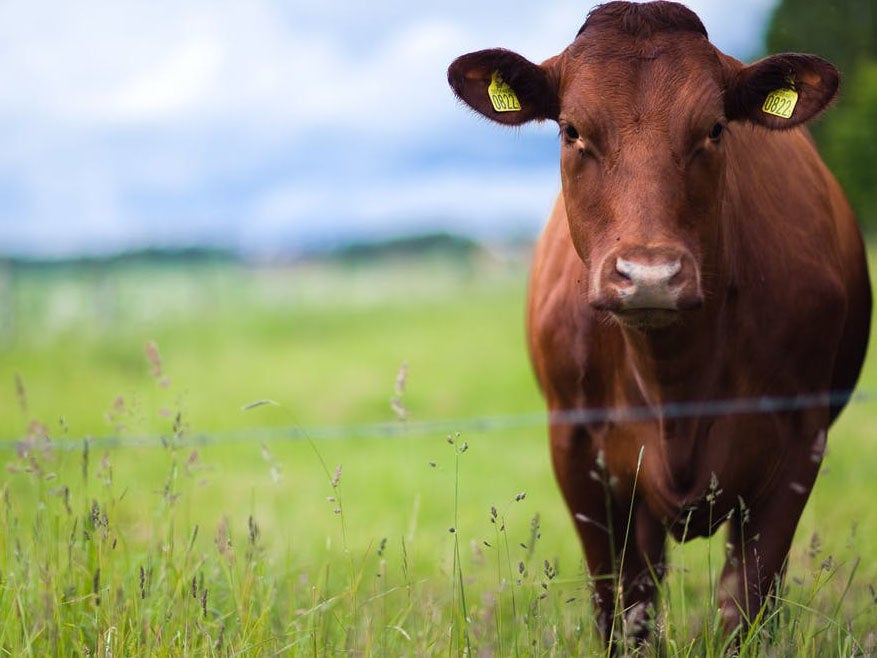Why we should be trying to make the most sustainable burgers possible
Burgers have a surprising environmental impact – but it can be reduced

Your support helps us to tell the story
From reproductive rights to climate change to Big Tech, The Independent is on the ground when the story is developing. Whether it's investigating the financials of Elon Musk's pro-Trump PAC or producing our latest documentary, 'The A Word', which shines a light on the American women fighting for reproductive rights, we know how important it is to parse out the facts from the messaging.
At such a critical moment in US history, we need reporters on the ground. Your donation allows us to keep sending journalists to speak to both sides of the story.
The Independent is trusted by Americans across the entire political spectrum. And unlike many other quality news outlets, we choose not to lock Americans out of our reporting and analysis with paywalls. We believe quality journalism should be available to everyone, paid for by those who can afford it.
Your support makes all the difference.In the lead up to barbecue season, I have become obsessed with making the most sustainable burger possible. This started when I decided to calculate the environmental impacts of a burger for a sustainable lunch I was hosting. I research this sort of thing for a living yet even I found it eye-opening to realise just how much the emissions that ultimately went into a burger patty could differ, depending on the ingredients used.
The main environmental impacts of a beef burger are caused by the large amounts of greenhouse gas emissions generated in the production of meat. This means that any beef – be it a prime cut or ground beef – has a high environmental impact. How high? Around 260g of greenhouse gasses per burger patty, which is the equivalent in carbon emissions of driving 2.5km in an efficient car. Fortunately, we can reduce this impact.
In the UK, a shop bought beef burger must contain 62 per cent beef. The other 38 per cent of a shop bought burger is typically made up of onion, flour or breadcrumbs, fat, and seasoning. At home we can do better than this, so why not replace some of that remainder with either minced offal or beef leftovers?
Adding offal, such as minced heart or liver, has always been a chefs’ trick to increase the “beefy” flavour of a burger. Adding beef leftovers from a previous meal is a burger hack that can help combat the problem of food waste and get you a great tasting burger.
About 13 per cent of beef purchased in the UK never reaches a human stomach. In other words, homes throw away 56,000 tonnes of beef per year, that’s 1.4 million tonnes of pointless extra greenhouse gases. More than a third of household beef waste is down to cooking too much, a waste of 19,000 tonnes. If handled, stored and cooked correctly, beef leftovers could be minced and mixed to make a burger.
You can also make sure that your burger patty is the right size for you and your appetite. Yes, the quarter pounder (114g) may be the traditional size for a burger – but a 70g patty is more manageable, and decreases greenhouse gas emissions and calories by 38 per cent. This reduction in portion size is also good for your health. Dietary guidance suggests eating less than 70g of red and processed meat per day. To make up for the slight reduction in patty you can always supersize the toppings, adding more delicious vegetables and pickles to make it a fully-loaded sustainable burger.
You can further reduce the environmental impacts of your burger by replacing beef with other meats and plant-based offerings that taste just as good. An Australian burger company, Burger Theory, recently removed beef burgers from their menu, and replaced them with a blend of 80 per cent kangaroo and 20 per cent fatty beef. The resulting burger is much better for the climate as beef emits six times more greenhouse gases than kangaroo. My friends in Adelaide report that it tastes great.
One of the tastiest burgers I have eaten recently was at Google in Washington DC late last year. I was served their blended burger, a mushroom-beef combination with less fat and fewer calories than a beef burger, but still packed full of flavour. The secret is the mushrooms’ meat-like texture and umami taste, which enhances the burger’s flavour. What’s more, a burger containing 30 per cent mushroom and 70 per cent beef has a 29 per cent lower greenhouse gas emission than a standard burger, and uses 29 per cent less water and 29 per cent less land.
In addition, a recent Dutch study found that other plant-based and blended burgers also had much lower environmental impacts than their 100 per cent meat counterparts. These blended and fully plant-based options are just starting to be stocked by supermarkets – examples include the Impossible Burger and Beyond Burger, while Quorn was one of the first. However, you cannot make these from scratch at home as all of them require some serious lab equipment to produce the final burger.
For the moment, if you want to make a sustainable burger at home, your best bet is to reduce your portion size, and to blend your beef with leftovers, offal, other meats, mushrooms or other plant-based ingredients. And if you do manage to create an environmentally-friendly burger – tweet me a picture.
Christian Reynolds is a knowledge exchange research fellow (N8 Agrifood) at the University of Sheffield. This article first appeared on The Conversation (theconversation.com)
Join our commenting forum
Join thought-provoking conversations, follow other Independent readers and see their replies
Comments